
Space and water heating uses more energy and costs more money than any other system in your home – typically making up to 70% of your utility bill. The choice of heating source and heating installation is one of the key decisions that will have a long-term impact on your house maintenance costs.
Heating costs are influenced by many factors. The most important ones are: the quality of the wall and roof insulation of the building, the type of heating source, the fuel used and the type and efficiency of the heating and ventilation systems.
The energy rating refers to the insulation of a building. The better the insulation, the lower the energy consumption. The table below shows the energy consumption levels and the corresponding energy rating.
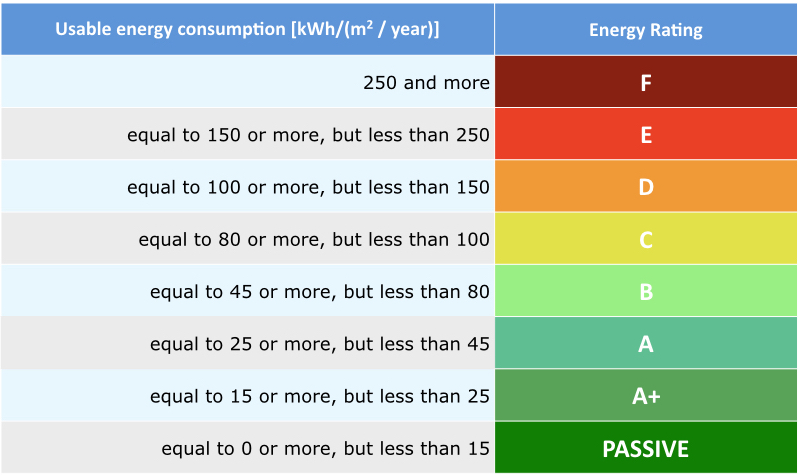
How can you determine the energy rating of a building? We recommend using the Energy Saving Calculator available on the www.polreff.org.
In order to complete the assessment you need some basic information about the building (year of construction, usable surface, the type of the heating system, the size and type of windows, type of water heating system) and an approximate number of inhabitants and their energy consumption habits etc.
Most buildings in Poland have an energy rating D or E. However newly built buildings receive ratings C and B.
Three examples of energy ratings and their impact on the heating capacity required are presented below:
Below, estimated heating capacity values are presented for heating sources in buildings of different sizes with different energy ratings.
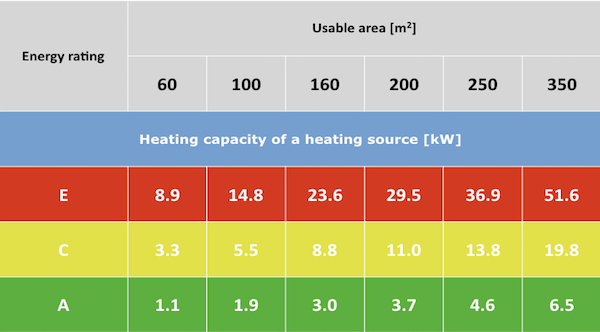
Heating capacity (nominal) measured in kW should be sufficient to effectively heat the living quarters or a building in the reference outdoor temperature linked to a climate zone. Poland is split into five climate zones that are presented in the picture below. The reference outdoor temperatures are presented in the table below.
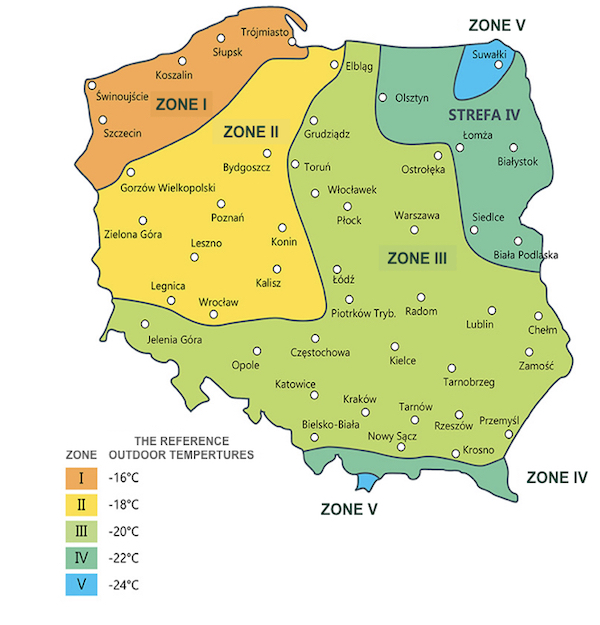
The PolREFF Energy Saving Calculator can help you determine the estimated heating capacity for selected heating sources. Locate your building on an interactive map and then select a heating source from the options menu.
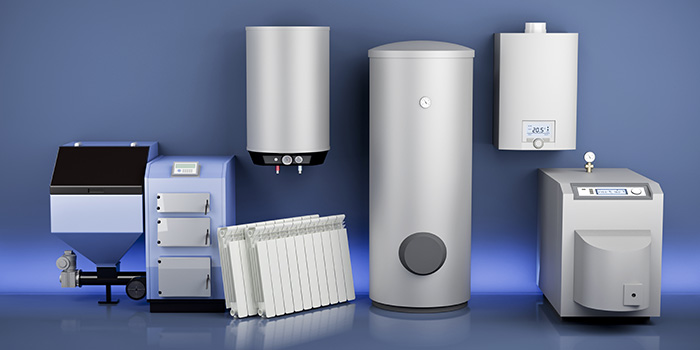
The next step is selecting the fuel type for the heating source. It is important to pay attention to two key factors:
Fuel availability should be considered from two points of view:
The last and the most important step is to analyze the costs.
A comparison of annual heating costs per one square meter between different energy carriers and heating energy sources is presented in the graph below. All indicated costs relate to a building with energy rating D.
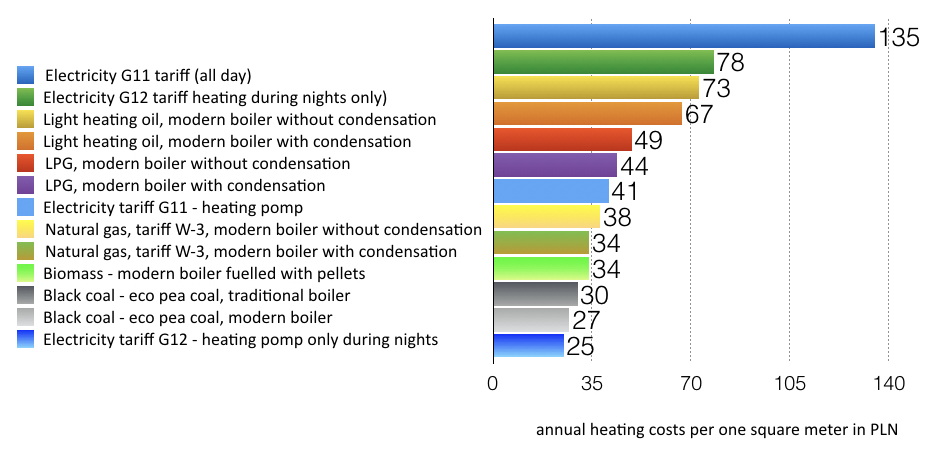
It is important to remember that the efficiency of a heating source can have a significant impact on costs. Often only the nominal efficiency in a full load is provided for an equipment. However in the peak heating season (and in a situation where the heating equipment is also used for heating the water) the equipment works in varying levels of load.
For example if the nominal power of appropriately selected heating equipment (for the temperature -20oC) is 20 kW, then in a temperature of +2oC only 9 kW of power will be needed. Thus, when comparing heating equipment their seasonal efficiencies should be taken into account. For example three levels of efficiencies are taken into account for heating boilers: full load, 30% load and the stand by mode.
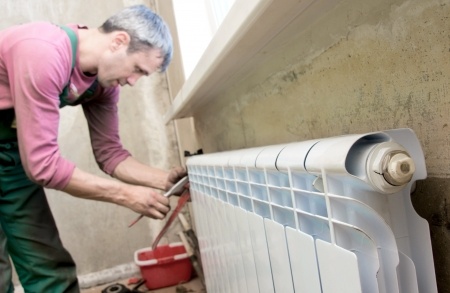
In practice there are many different types of heating installations: water, air, radiator, surface and low and mid-temperature. The right combination of a heating installation and a heating source has an impact on heating efficiency.
The best fit between types types of heating installation and heating sources is presented in the table below.
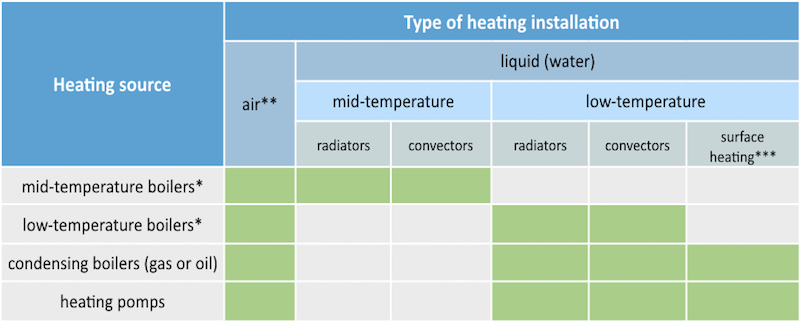
* for all types of fuels
** in combination with air recuperation ventilation (recuperation)
*** floor/or wall
The table above indicates only the optimal match between heating source and installation.
It does not mean that e.g. a condensing boiler would not work with mid-temperature heating installation. It will however be less efficient.
The table below summarizes all the information and presents the most popular mid- to high efficiency and environmentally friendly technologies.
House with Energy Rating D and a surface of 160 m2
|
* costs may vary depending on tariffs/market prices changes
** in relation to fuel energy levels
The table below shows the optimal selection path for choosing a heating source depending on your goals.
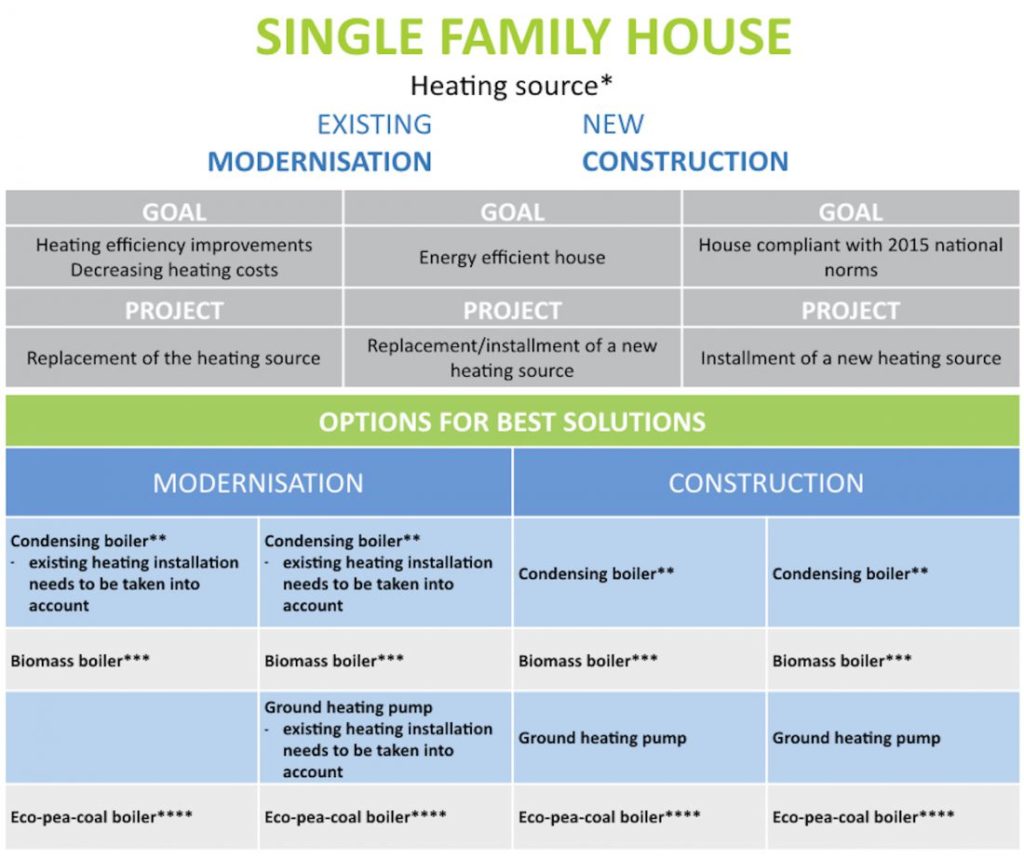
* also sources fueled with biomass (straw, wood chips, wood dust, pellets)
** possibility to access natural gas network and costs (LPG, heating oil) need to be checked
*** type, availability and prices of biomass need to be checked
**** availability and prices of high quality eco-pea-coal need to be checked
Annual heating costs
Costs of the new boiler and installation
Annual savings
How to choose? The guide on using the LEME list
http://muratordom.pl
Wspierane przez:
We współpracy z: